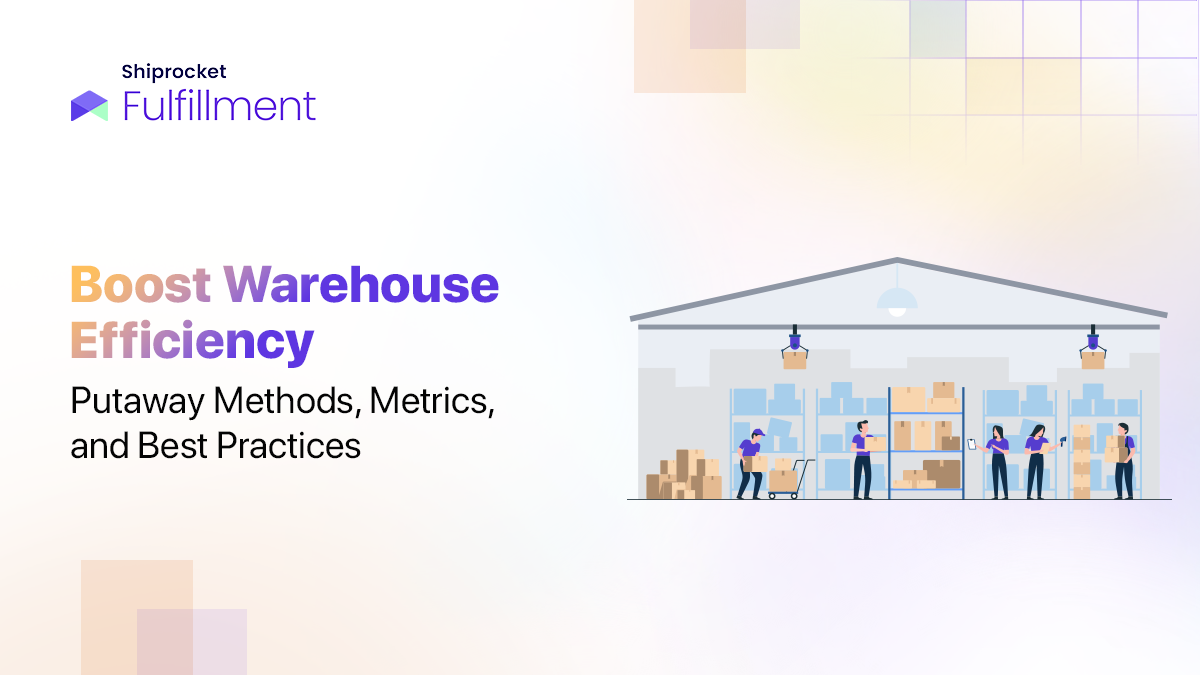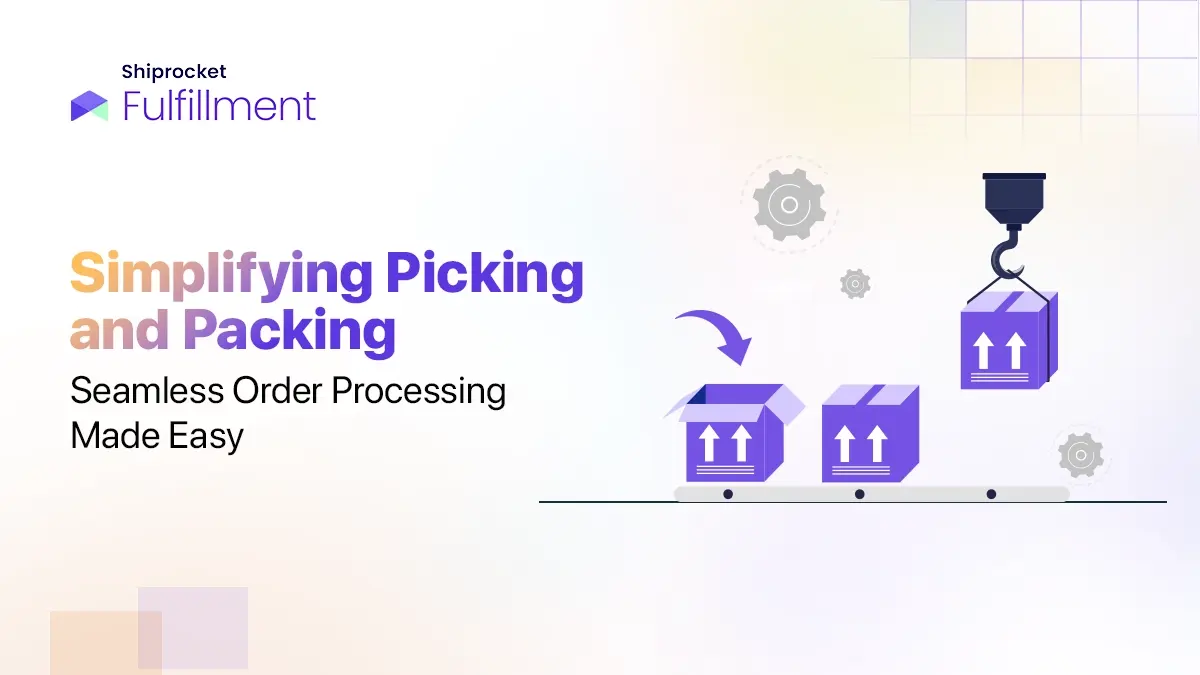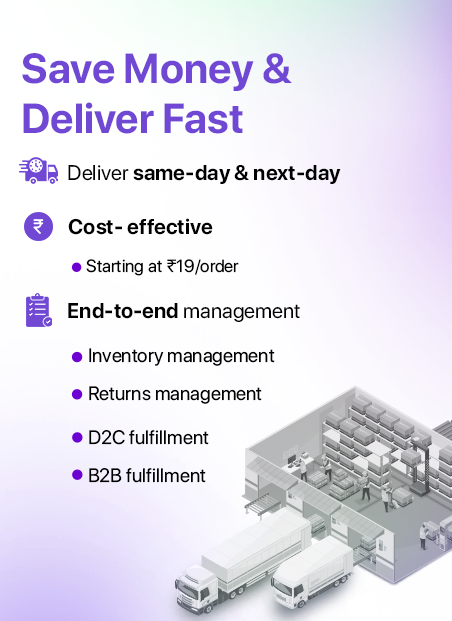Businesses need more than quality products and marketing strategies to impress customers in this digital era. How quickly and efficiently you deliver those products can make a world of difference today. About 80% of customers want same-day shipping, and 61% want it even faster. That’s where a shipping strategy becomes necessary; it can make or break your customer experience.
Landing your products at your customers’ doorsteps is not a child’s play. You require everything from advanced logistics to technology to combat ecommerce shipping problems.
Shipping can become a huge problem from minor inconveniences in no time, causing losses and soiling your brand’s reputation. This article will take you through the shipping problems and solutions to overcome them.
Breaking Down Shipping Problems
Let’s first talk about the most common major issues in shipping products within or outside the country.
- eCommerce Shipping Delays
Customers most frequently complain about shipping delays. These can be caused by bad weather conditions, high order volumes during peak seasons, or mismanagement at sorting hubs.
These delays are likely to frustrate and instil uncertainty in your customers. Studies reveal that after three shipping delays, 58% of customers will not buy from your brand again.
- Damaged or Loss of Packages
A theft or natural calamity during the shipping journey could partially or completely damage the shipment’s contents. The package could also go missing, harming your customers’ trust and leaving you with financial losses.
Moreover, causes of shipping damages such as poor packaging or mishandling during transportation can also lead to breakage or damage, emphasising the need for strong packaging and reliable carriers.
- Hidden Shipping Costs
If your customers have to pay unexpected shipping fees due to unclear pricing, it can deter them from completing their purchases or reordering from you. This issue mostly comes from complex international shipping policies or miscalculated dimensional weights.
Duties and taxes differ among countries based on many factors, such as trade agreements, product value, and intended use. Your customers will pay these additional costs when the shipments arrive at their destination, so they must be aware of these charges.
- Inefficient Tracking Systems
Tracking your shipment is helpful, but it is insufficient to efficiently manage in-transit problems. Today, customers expect live updates about their order status at every step, from dispatch to delivery.
Businesses that fail to provide accurate tracking information may get higher customer service queries or complaints and lower satisfaction rates.
- Modifications in Customs and Regulatory Policies
International shipping already involves a string of complex procedures, from dealing with new carriers to customs duties and taxes. Changes in countries’ customs or regulatory policies can make it more challenging.
You may face delivery delays if you are not updated about these regulatory alterations. Your shipment could also be rejected and sent back.
Top Reasons for E-commerce Shipping Delays
These eight common issues could cause potential delays in your deliveries, upsetting your customers and bottom line:
1. Natural Occurrences
Events beyond your control or natural hindrances can often delay your shipments. Your in-transit consignments may face extreme weather conditions, piracy, natural disasters, or wars. These events can disrupt global trade, significantly impacting ocean shipping.
2. Global Disruptions
A 400-meter-long container ship was stuck in the Suez Canal a few years ago, causing a major blockage in the main shipping route. Cargo ships had to reroute, which stalled about US $9.6 billion of global trade daily.
Similar risks, such as global political tensions, pandemics, environmental factors, and others, can also disrupt the international shipping process and cause severe delays.
3. Problems at Customs
Incomplete or incorrect shipping documents, random inspections, and changing customs requirements can hold up shipments. This can happen if you lack the expertise or knowledge to handle customs paperwork and procedures.
4. Damaged Cargo
Any breakage or damage to your cargo can cause delays in delivery. Bad weather, a fire, or theft may hamper your products. Therefore, you need sturdy, weather-proof packaging and relevant shipping insurance to protect your shipment and ease claims.
5. Unclear Roles
Shipping involves a shared set of responsibilities between you and your logistics partner. Delays often occur when roles and actions are not defined clearly. You must stay informed about requirements and use tools to track international shipment milestones.
6. Outdated Technology
Obsolete, old, or incompetent technology, like manual booking processes, can slow your shipments. So, choosing logistics providers offering advanced systems for faster booking, tracking, and transportation is important.
7. Congested Ports
There could be congestion at the ports due to labour strikes at times or a peak season, like holidays or festivals, kicking in. Port congestion can last for weeks, disrupting shipping schedules.
8. Production Delays
If suppliers miss production deadlines and you don’t plan for potential delays, it may severely affect transportation schedules. So, you’ll always need a buffer to handle such situations.
How Shipping Problems Affect Businesses
Around 32% of global buyers say that delivery delays or shipping problems are the two major disadvantages of shopping online. If businesses fail to meet the delivery expectations of their customers, they can suffer in the following ways:
- Loss in Revenue and Decreased Sales: Slow shipping may cause customers to abandon their carts, resulting in reduced sales and lost revenue. Studies show that over 25% of buyers would leave their carts if same-day shipping was unavailable.
- Tarnished Brand Reputation: Shipping delays may also provoke your customers to leave bad reviews for your brand and damage your goodwill.
- Lost Customer Trust: Once they have experienced delivery delays, loyal customers may not return to shop with you. Nearly 69% of customers are less likely to shop with a brand again if the order is not delivered within two days of the promised date.
- Disrupted Supply Chain Operations: Shipping delays can affect your demand forecasting, which can make it difficult to restock on time, or you may overstock.
- Strained Suppliers and Stakeholders Relationships: Delivery delays may leave your suppliers and stakeholders doubting your efficiency and adversely affect relationships.
Fixing Shipping Problems: Tips and Strategies
Shipping delay is a multifaceted issue with many implications for businesses. These insightful tips can help you address shipping challenges:
- Communicate Transparently and Clearly
Set clear and realistic delivery timelines to build trust. Share accurate estimates based on location and conditions, especially during peak seasons. Use data analytics to improve delivery predictions and notify customers promptly about potential delays due to weather or holidays.
- Manage Paperwork Efficiently
Accurate documentation prevents delays and unnecessary inventory carrying costs. Send pre-alerts to forwarders to address errors early and comply with customs regulations, avoiding penalties.
- Give Live Tracking Facility
Monitor your shipments and let customers also track their orders to reduce their anxiety. A user-friendly interface to show shipment status, estimated delivery times, and delay alerts can keep them duly informed.
- Label Packages Accurately
With appropriate packaging and labelling, you can reduce the chances of mishandling and delivery delays due to incorrect addresses or tampered packages.
Use durable materials, automate labelling to reduce errors, and include clear recipient details. For shipping hazardous goods, like lithium batteries and more, work with licensed specialists to ensure safety and compliance.
- Provide Multiple Shipping Options
You may receive urgent orders for same/next-day delivery, so offering your customers expedited delivery options is important. Tie up with shipping companies offering reliable carriers and express, standard, instant, and economical shipping solutions.
- Address Issues Quickly
Resolve shipping problems quickly to keep your customers happy and satisfied. Dedicated support channels and automated common solutions like address corrections can help you do the same.
- Take Cargo Insurance
Protect your valuable shipments with comprehensive “All Risks Covered” cargo insurance. This way, you can minimise your financial losses due to lost or damaged shipments.
- Choose a Reliable Shipping Partner
The most crucial part is choosing an experienced, reputable, and dependable logistics provider. It can streamline your supply chain and enhance customer experiences by making domestic and international cargo shipping easy.
How Shiprocket Fulfillment Simplifies Shipping
Shiprocket Fulfillment is the partner you need to deliver every shipment on time, safely and efficiently. It is a tech-enabled, 360-degree shipping solution for eCommerce and retail businesses to optimise their B2B and B2C operations, improve efficiency, and give customers the best delivery experience.
Some of Shiprocket Fulfillment’s core service features include:
- Exceptionally fast and reliable shipping
- AI-powered, user-friendly online platform
- Reasonable rates with no hidden charges
- Real-time tracking with live status notifications
- Automated Workflows for quick order processing
- Pan-India reach with 24000+ pin codes covered
- Extensive Global reach in 220+ countries
- Same/next-day delivery options
- Expert team handling shipments safely
- Dedicated 24/7 Customer Support
Conclusion
Shipping problems are one of the realities of the eCommerce world, but you can overcome the challenge with effective planning and communication. All you have to do is identify the causes, prepare for contingencies, and partner with reliable and reputable shipping firms like Shiprocket. By adopting the right strategies and solutions, you can turn shipping challenges into opportunities for enhancing customer satisfaction and driving business growth.




